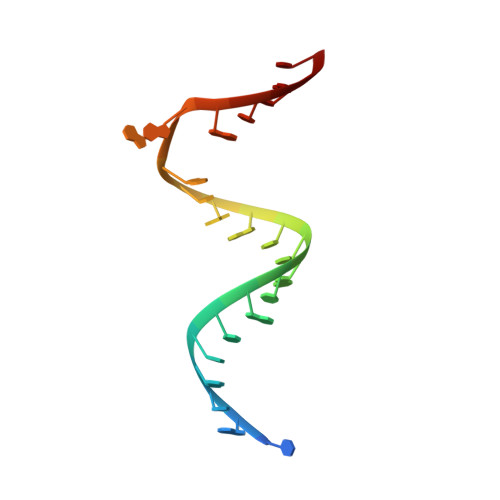Crystal structures of a bioactive 6'-hydroxy variant of sisomicin bound to the bacterial and protozoal ribosomal decoding sites
Kondo, J., Koganei, M., Maianti, J.P., Ly, V.L., Hanessian, S.(2013) ChemMedChem 8: 733-739
- PubMed: 23436717
- DOI: https://doi.org/10.1002/cmdc.201200579
- Primary Citation of Related Structures:
4GPW, 4GPX, 4GPY - PubMed Abstract:
Parasitic infections recognized as neglected tropical diseases are a source of concern for several regions of the world. Aminoglycosides are potent antimicrobial agents that have been extensively studied by biochemical and structural studies in prokaryotes. However, the molecular mechanism of their potential antiprotozoal activity is less well understood. In the present study, we have examined the in vitro inhibitory activities of some aminoglycosides with a 6'-hydroxy group on ring I and highlight that one of them, 6'-hydroxysisomicin, exhibits promising activity against a broad range of protozoan parasites. Furthermore, we have conducted X-ray analyses of 6'-hydroxysisomicin bound to the target ribosomal RNA A-sites in order to understand the mechanisms of both its antibacterial and antiprotozoal activities at the molecular level. The unsaturated ring I of 6'-hydroxysisomicin can directly stack on G1491, which is highly conserved in bacterial and protozoal species, through π-π interaction and fits closer to the guanidine base than the typically saturated and hydroxylated ring I of other structurally related aminoglycosides. Consequently, the compound adopts a lower energy conformation within the bacterial and protozoal A-sites and makes pseudo pairs to either A or G at position 1408. The A-site-selective binding mode strongly suggests that 6'-hydroxysisomicin is a potential lead for the design of next-generation aminoglycosides targeting a wide variety of infectious diseases.
- Department of Materials and Life Sciences, Faculty of Science and Technology, Sophia University, 7-1 Kioi-cho, Chiyoda-ku, 102-8554 Tokyo, Japan. j.kondo@sophia.ac.jp
Organizational Affiliation:

















